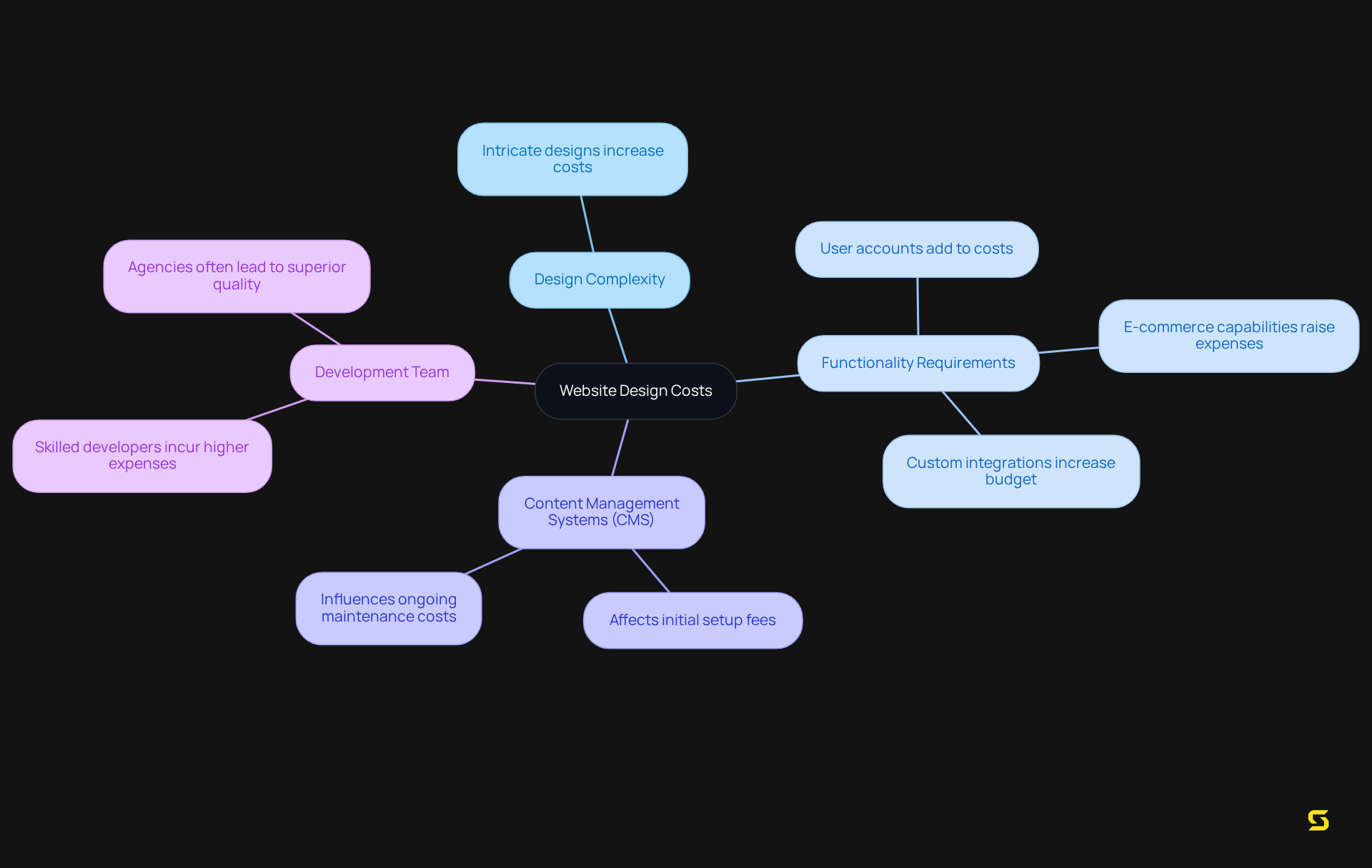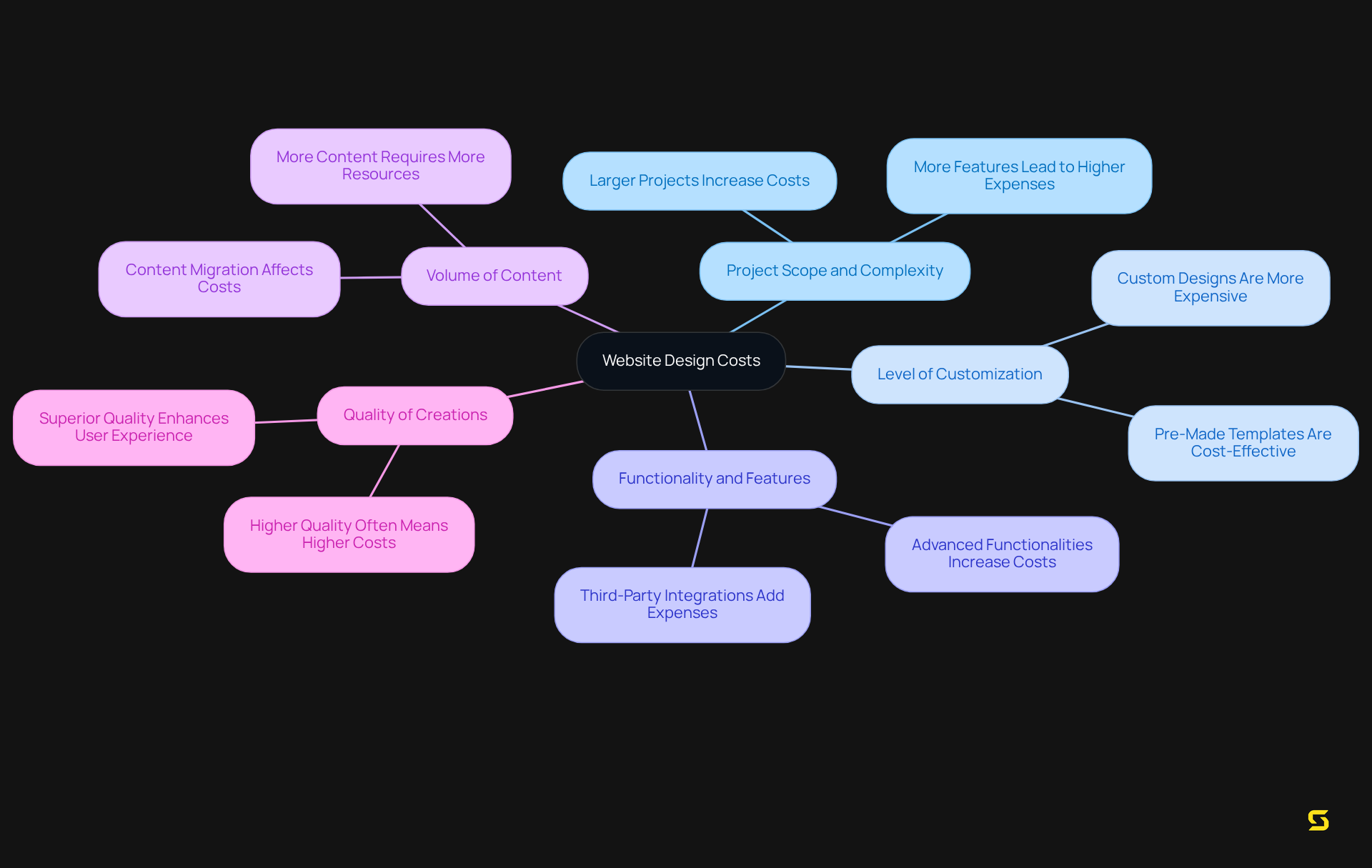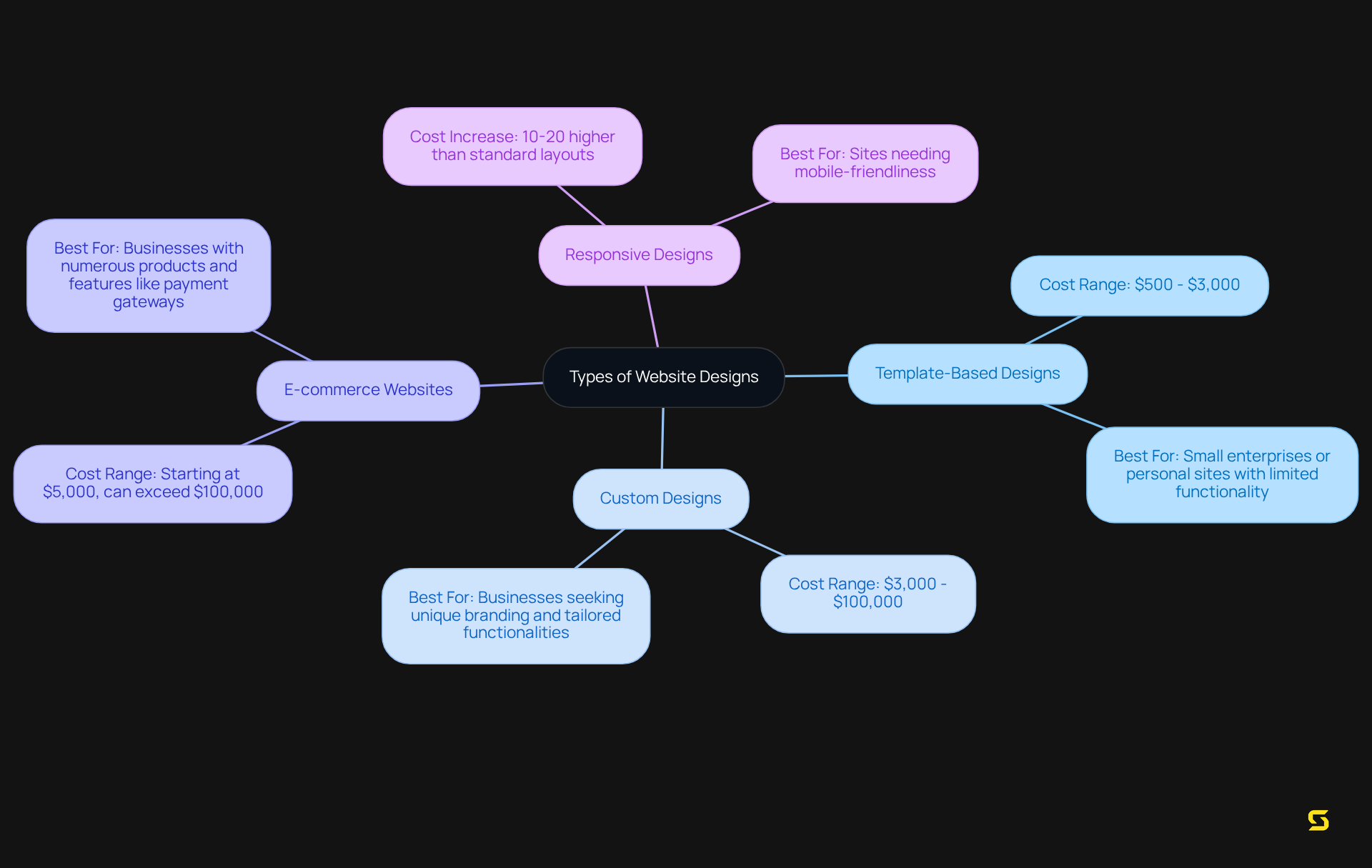Overview
This article delves into the critical factors and management strategies that dictate website design costs. It asserts that these costs can fluctuate significantly based on:
- Project complexity
- Required functionalities
- The expertise of the development team
To effectively manage these costs, it is essential to:
- Define clear objectives
- Prioritize features
By implementing these strategies, stakeholders can navigate the complexities of website design with confidence and precision.
Introduction
Understanding the costs associated with website design is essential for businesses seeking to establish a robust online presence. Expenses can vary significantly, ranging from a few hundred dollars for basic templates to tens of thousands for fully customized solutions. Navigating this financial landscape can be challenging.
What key factors influence these costs, and how can companies manage their budgets effectively to ensure a worthwhile investment? This article explores the intricacies of website design costs, providing valuable insights and strategies that empower stakeholders to make informed decisions while maximizing their resources.
Fundamentals of Website Design Costs
The expenses associated with website cost design can vary significantly based on several factors, including the complexity of the project, the technology used, and the expertise of the team involved. Typically, costs range from a few hundred dollars for basic templates to tens of thousands for custom solutions. Understanding the key components that influence these expenses is essential:
- Design Complexity: Intricate designs demand more time and expertise, resulting in higher costs.
- Functionality Requirements: Features such as e-commerce capabilities, user accounts, and custom integrations can greatly increase expenses.
- Content Management Systems (CMS): The choice of CMS affects both initial setup fees and ongoing maintenance costs.
- Development Team: Hiring skilled developers or agencies typically incurs higher expenses but often leads to superior quality outcomes.
By grasping these fundamentals, stakeholders can set realistic budgets and expectations for their website cost design in online projects.

Key Factors Influencing Website Design Costs
Several key factors significantly influence the website cost design. First, the project scope and complexity play a crucial role; larger projects with more pages and features will naturally influence the website cost design. Additionally, the level of customization is vital; custom designs tailored to specific business needs significantly impact the website cost design, making them invariably more expensive than pre-made templates. Furthermore, the functionality and features included in the website cost design can significantly impact expenses; advanced functionalities, such as interactive elements or third-party integrations, increase both development time and costs. The volume of content also matters; the amount of content that needs to be created or migrated can further affect the website cost design. Lastly, the quality of creations is paramount; superior quality designs that enhance user experience often influence the website cost design. By understanding these factors, companies can better manage their budgets and expectations, ensuring a more effective investment in their website cost design.

Types of Website Designs and Their Cost Implications
Website designs vary significantly in cost, and understanding these differences is crucial for businesses looking to align their choices with budget and objectives.
- Template-Based Designs: These options are the most cost-effective, typically ranging from $500 to $3,000. They are suitable for small enterprises or personal sites that require limited functionality.
- Custom Designs: Custom websites can range from $3,000 to $100,000, depending on their complexity and features. They are ideal for businesses seeking unique branding and tailored functionalities.
- E-commerce Websites: These designs often start at $5,000 and can exceed $100,000, influenced by the number of products and features such as payment gateways and inventory management.
- Responsive Designs: Making a site mobile-friendly can increase costs, typically falling between 10-20% higher than standard layouts.
By comprehending these categories, companies can make informed decisions that align with their financial capabilities and strategic goals.

Strategies for Managing Website Design Costs Effectively
To effectively manage website design costs, implement the following strategies:
- Define Clear Objectives: Establishing clear project goals is essential to avoid scope creep, which can lead to increased costs.
- Prioritize Features: Focus on crucial features initially, enabling a staged approach to development that distributes expenses over time.
- Use Pre-Made Templates: For simpler projects, utilizing pre-made templates can significantly reduce creation costs.
- Outsource Wisely: Consider outsourcing specific tasks to freelancers or agencies that offer competitive rates without compromising quality.
- Regular Budget Reviews: Continuously monitor expenses against the budget to identify potential overruns early and make necessary adjustments.
By applying these strategies, businesses can maintain control over their website cost design budgets while achieving high-quality results.

Conclusion
Understanding the intricacies of website design costs is essential for businesses striving to establish a formidable online presence. This article elucidates how various factors—including design complexity, functionality requirements, and the selection of a development team—significantly influence overall expenses. By comprehending these elements, stakeholders can formulate more realistic budgets and expectations for their projects.
Key insights discussed encompass the spectrum of website designs, ranging from cost-effective template-based options to bespoke solutions, each carrying distinct implications for budget considerations. The article underscores the criticality of strategic planning, such as defining clear objectives and prioritizing essential features, to effectively manage costs. By harnessing these strategies, businesses can adeptly navigate the financial landscape of website design while achieving high-quality outcomes.
Ultimately, the effective management of website design costs transcends mere expense minimization; it centers on making informed decisions that align with overarching business goals. By implementing the insights and strategies outlined herein, companies can optimize their website design investments, ensuring a harmonious balance between functionality, quality, and cost-effectiveness. Embracing these practices will pave the way for a more successful online presence, positioning businesses for growth and engagement in an increasingly digital world.
Frequently Asked Questions
What factors influence website design costs?
Website design costs are influenced by factors such as design complexity, functionality requirements, choice of content management systems (CMS), and the expertise of the development team.
How does design complexity affect costs?
Intricate designs require more time and expertise, which results in higher costs for the project.
What are functionality requirements, and how do they impact expenses?
Functionality requirements include features like e-commerce capabilities, user accounts, and custom integrations. These features can greatly increase the overall expenses of the website design.
How does the choice of content management system (CMS) affect website costs?
The choice of CMS can impact both the initial setup fees and ongoing maintenance costs associated with the website.
What role does the development team play in website design costs?
Hiring skilled developers or agencies typically incurs higher expenses, but it often leads to superior quality outcomes for the website project.
What is the typical cost range for website design?
Costs can range from a few hundred dollars for basic templates to tens of thousands of dollars for custom solutions.





